#snowy egret
Explore tagged Tumblr posts
Text
Please enjoy this delightfully ridiculous mating display from a Snowy Egret in peak breeding plumage. That signature gurgling call you can hear at the start of the video is one of my favorite noises in the animal kingdom! This is maybe the best time of year to go birding where I live as the swamps and wetlands are simply electric with activity and life. Everywhere you turn your head there is something remarkable to behold.
2K notes
·
View notes
Text

#photography#canon photography#photographer on tumblr#photographers on tumblr#photography on tumblr#original photography on tumblr#egrets#birds#wild birds#snowy egret#wildlife#wildlife photography#wildlifephotography#animal photography#nature#bird
87 notes
·
View notes
Text


Little Blue Heron (Egretta caerulea)
Snowy Egret (Egretta thula)
September 6, 2024
John Heinz National Wildlife Refuge, Tinicum, Pennsylvania
I thought I had photographed several juvenile Little Blue Herons, which are white when they are young and are common at this refuge at this time of year. Was surprised to see the black legs and yellow feet of a Snowy Egret when I was editing the photos. Also the Little Blue has a two-tone bill and the Snowy's is black.
#birds#bird#photographers on tumblr#snowy egret#Egretta thula#Egretta caerulea#little blue heron#herons#egrets#birdblr#birb#birbs#ornithology#birblr#nature#animals#wildlife photography
1K notes
·
View notes
Text

grey heron & snowy egret sketchbook spread print of the grey heron is up on my shop!
#my art#illustration#bird art#bird illustration#gouache painting#gouache#sketchbook#sketchbook art#sketchbook page#grey heron#snowy egret
2K notes
·
View notes
Text

Snowy Egret Egretta thula
#wildlife photography#bird#nature photography#animals#my photos#nature#birding#birdwatching#original photography#photographers of tumblr#snowy egret#birdlr
151 notes
·
View notes
Text

Snowy Egret
Baylands Nature Preserve
#bird photography#original photography#photographers on tumblr#nature photography#birds#snowy egret#reflections#rafefar
141 notes
·
View notes
Text

Snowy Egret
#photographers on tumblr#photography#nature#landscape#florida#birds#birdblr#bird watching#bird#birding#bird photography#birdwatching#florida wildlife#wild bird photography#wildlife#wild animals#wild birds#snowy egret#sea birds
54 notes
·
View notes
Photo

Snowy Egret (Egretta thula)
© Alan Desbonnet
95 notes
·
View notes
Text

#Egret#Snowy Egret#Wildlife#Bird Photography#Nature#Lakeside Beauty#Birdwatching#Wading Birds#Colorado Wildlife#MissedMileMarkers
87 notes
·
View notes
Text



Snowy Egret and Common Green Darner Egretta thula and Anax junius
9/23/2023 Orange County, California
Have you ever heard the fact that dragonflies are one of the most successful predators in the world, and they catch about 95% of the prey that they hunt? Well, we watched this poor darner try and fail to catch a butterfly, and then immediately get snatched by this snowy egret. Maybe this guy was towards the end of its lifespan, or maybe just very unlucky!
#snowy egret#common green darner#darner#dragonfly#dragonflies#insect#insects#insect death#predation#egret#egrets#bird#birds#bird photography#birdblr#wildlife#wildlife photos#wildlife photography#nature#nature photos#nature photography#birding#birdwatching#birding photos#my photos#california#california wildlife
73 notes
·
View notes
Text



Siblinghood
239 notes
·
View notes
Text
The State Birds Initiative: Massachusetts (#6)

Whoa, it's December already? Wow! Been a while since I made one of these, but I honestly needed the break I think. So, uh...where were we? Ah, right.
Welcome to the sixth official poll of the State Birds Initiative! Before the poll, though, one thing real quick, and I cannot emphasize this enough! Read the post below before voting in the poll! It's not a requirement, but it is a real firm suggestion, especially important if you're lacking context about the birds being presented as the new (or old) State Bird of the Bay State, Massachusetts. This is to be fully informed as to why these are being presented, and to make your choices appropriately. Lastly, some of these birds, you will notice, *may *go against some of the rules listed in the introduction post. All is explained after the jump where the explanations are, I promise you that. With that...OK! Here's the poll!
Welcome to the sixth official poll of the State Birds Initiative! Before the poll, though, one thing real quick, and I cannot emphasize this enough! Read the post below before voting in the poll! It's not a requirement, but it is a real firm suggestion, especially important if you're lacking context about the birds being presented as the new (or old) State Bird of the Bay State, Massachusetts. This is to be fully informed as to why these are being presented, and to make your choices appropriately. Lastly, some of these birds, you will notice, may go against some of the rules listed in the introduction post. All is explained after the jump where the explanations are, I promise you that. With that...OK! Here's the poll!

Massachusetts, baby! I've had to travel away from the Bay State in the past week for a conference, but I'm excited to get back to this surprisingly great state. I say surprisingly because Massachusetts' reputation isn't a greatest for those outside of it, but living in it has definitely changed my mind for a number of reasons! That said, the time has come to talk about it a bit. The sixth smallest state in the union, Massachusetts is home to a number of prominent cities, both historically and contemporaneously. There is of course, Boston, the capital and largest city seen above via the big-ass CITGO sign. And while that's the city people equate with the entire state, let's not forget Worcester, Springfield, Cambridge, Lowell, Plymouth, Salem, Amherst, Natick, Cape Cod, etc., etc., etc. There's a whole-ass pile of classic New England cities in this small state, as well as a bevy of habitats and natural spaces.
So, to get into it a bit, Massachusetts is smack-dab in the New England temperate forests, with the highlands dominating the western portion of the state, and a flat lowland coastal region in the eastern half. Forests are temperate mixed, which contributes to the legendary falls that we see in New England. The coastal regions, meanwhile, are glacial in origin, covered in wetlands towards the center of the state, and beaches on the shores. Also of note are the various coastal marshes throughout the state, which serve as their own predominant habitats. Using the BioMap2 project as a framework, let's talk a little bit about these habitats.
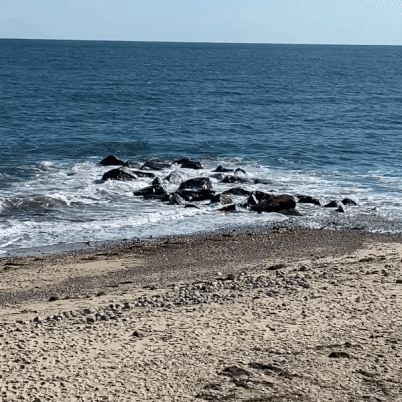
Massachusetts, of course, sits on the Atlantic Ocean, which certainly isn't a first for this list, but is vitally important as we go further north into New England. In the case of Massachusetts, we're looking at sandy beaches and dune habitats as prominent foraging and nesting areas for various shorebirds, which does make shorebirds a high likely focus for this list. Some of you probably know one of the most important birds we'll be looking at, but we'll get to that one, don't worry.
Alongside the beaches, estuaries are a prominent habitat along the shorelines. Places like Plum Island, in northern Massachusetts, or Belle Isle Marsh in the middle of Boston itself, personally come to mind. Massive saltmarshes that are vital stopover habitats for migrants, habitats for insects and endangered turtles, and coastal salt ponds and tidal marshes that house incredible biodiversity within them. There's a lot of focus coming to the coastlines, that's what I'm saying. All of these habitats and the species within them comprise about 41,000 acres of land, and about 75% of that is in danger from development and rising sea levels.
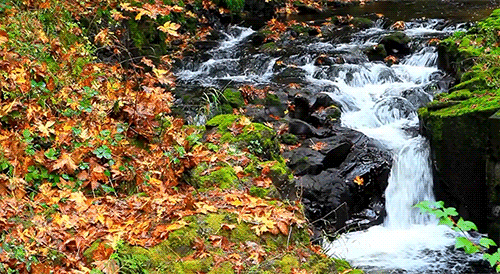
Now, I'm gonna skip over a bunch of other habitats here, especially freshwater wetlands and riparian habitats, because while these are extremely important, they won't be getting as much focus here. Now, we need to move on to the forests. I've talked about them before in Connecticut, New Jersey, and Pennsylvania, but we've got a very specific situation here in Mass. Here, because of the large number of people and settlements, fragmentation is a very prominent problem in the state. For the uninitiated, habitat fragmentation is basically what it sounds like: splitting up habitat by roads or other man-made corridors, breaking up populations of several animals, birds included. Doesn't sound like a big deal to animals that can fly, but birds don't like crossing corridors if they can help it, because it makes them vulnerable to predation (of adults and nests) and car strikes. So, forests of New England and Massachusetts are a habitat of needed focus. And while this will receive a slightly lesser focus, most likely, it's still a place we'll take a look at.
These three habitat types, wetland, coastal, and forest, are the most important in Massachusetts, as well as in New England (which, again, will change slightly as we head further north). But there's also the ever-important human element to consider, ESPECIALLY here.

While I said Boston doesn't define the entire state, and it doesn't, it's also the second most populated city on our list of states thus far, and happens to be one of the most important places in the country historically. Let's not forget, this is basically the seat of the American Revolution in many ways, so it's a pretty major part of our cultural identity as a country. And trust me, Boston is fully aware of that fact. I'm never one to dabble in stereotypes, but Bostonians are extremely proud to be Bostonians most of the time. It's a proud city, and that's understandable from a traditional point of view.
Plus, with Plymouth Rock 40 minutes to the south (and not worth the drive, from what I've heard), the textile-based seat of the American Industrial Revolution 40 minutes to the north (looking at you, Lowell), the site of the "shot heard round the world" 15 minutes away (Concord and Lexington, of course), the oldest American university 5 minutes away (Cambridge, of course), and the home of the legend of the American witch about an hour north (Salem, of course)...look, it's a central hub of the state, and it WILL not be ignored! So, with that said, grab some coffee from Dunks and some clam chowdah, let's settle in and check out some birds!
If anybody has a suggestion that I hadn't brought up here, send it my way! I will absolutely add another poll if there are entries I think could bear fruit. But, in the meantime, read on if you're interested in the possible choices for the State Bird of Massachusetts!
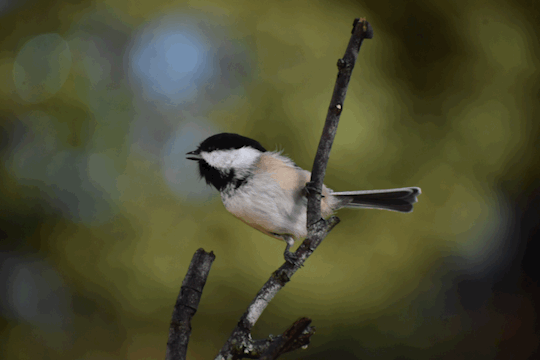
Black-capped Chickadee (Poecile atricapillus)
I gotta say, I have a real soft-spot for these guys. Although, to be fair, I think most people do! Named after their iconic call, and their memorable black cap, the Black-capped Chickadee (Poecile atricapillus) is one of the most iconic birds of New England, and arguably of North America. I say arguably only because there are a few chickadees in the United States, but the Black-capped is one of the most famous. We'll revisit the rest in two later posts, but this one is our focus today.
This bird was originally chosen because, well, it's iconic. I assume. To be honest, I don't actually know why it was chosen, outside of it being recognizable. It's also possible (POSSIBLE) that it was inspired by nearby Maine's choice of State Bird. But that's a choice we'll get to at a later date, I promise you that. As for the BCCH here, does it fit the state? I'll be honest, I actually like the chickadee for Massachusetts' State Bird. Partially, that's because it's a bird that can be found all throughout it with no difficulty, and it's an excellent beginner bird for kids (and just-starting amateurs). But, it's also small and incredibly scrappy, just like Massachusetts. I've had these guys in hand before, and I tell you, these little bastards'll hammer away at your cuticles with their beaks to get you to let them go. Doesn't hurt, unless they really try to grab on and twist at a sensitive spot, but they're fighters!

They're also quite social and vocal, which also fits residents of the Bay State. They have a unique language, with an alarm call that's recognizable by multiple bird species for warning, and it's also their most famous call ("chick-a-dee-dee-dee-dee"). The more "dees" there are, the higher the perceived threat is, fun fact. They hang out in groups in the winter, both with other chickadees and other birds, and their brains generate new neurons in the autumn and winter to remember and navigate to places where they can find food during a difficult harvesting season. That's how I feel when I have to remember where the nearest Dunks is for coffee, not gonna lie.
I realize that I'm making some convincing arguments for the incumbent here, but...yeah, there's a reason. I do honestly think this is a solid choice for the State Bird of Massachusetts, so I'll support its re-election if that occurs. But with that said and presented, let's move on to the challengers. Some are good, some are mediocre, and some are a bit surprising. And some...should maybe belong to a different state.
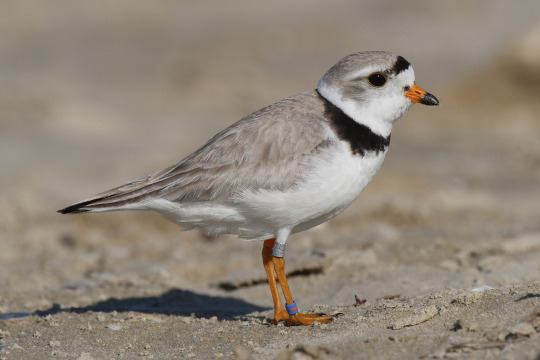
Piping Plover (Charadrius melodus)
eBird's suggestion is, unsurprisingly, the Piping Plover (Charadrius melodus), because a whopping 25% of the breeding population can be found in Massachusetts, according to eBird Status and Trends. And WOW, that is a massive proportion. That means, just to make this clear, one in 4 of ALL Piping Plovers are born in Massachusetts. Significant proportion, meaning that this has a claim on the role of MA State Bird for that reason alone. And Massachusetts certainly knows this, as several beaches in the state are shut down during the plover breeding season to allow them to nest in peace, without human disturbance.
In fact, when Piping Plovers were declared endangered in the Endangered Species Act, Mass Audubon launched the Coastal Waterbird Program to protect them and a later entry on this list. The population has exploded tenfold in the last 40 years of conservation work, and these are a pretty easy to find species now, if you're looking for them. This is a great introductory bird, both to conservation efforts, and to shorebirds (which are notoriously difficult to identify). It's also, surprisingly for shorebirds of this ilk, pretty easy to identify. And also...they're incredibly cute. I mean, have you seen the babies? It's crazy how cute they are. Seriously, LOOK AGAIN. Precious. Another solid candidate, and an excellent representative of the beaches of Massachusetts.
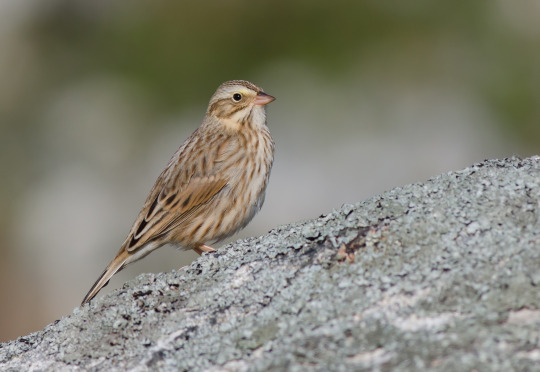
Ipswich Sparrow (Passerculus sandwichensis princeps)
Ah, the Savannah Sparrow (Passerculus sandwichensis). We meet again. Sorry to abandon you back there in Georgia, but to be fair, you were only nominated there because you're named after a major city in the state. But here...ah, wait, right, same thing. Now, to be fair, you've probably mentioned that the nominated bird is the Ipswich Sparrow (Passerculus sandwichensis princeps), not the Savannah Sparrow. But this is, of course, a subspecies of the Savannah Sparrow, named after Ipswich, Massachusetts due to its first sighting there. Larger and paler than its compatriots, the Ipswich Sparrow is known from Massachusetts...but breeds in Nova Scotia. Yeah, we've got another Connecticut Warbler (Oporornis agilis) situation here. Yikes.
So, is there a reason to nominate this bird for Massachusetts outside of its name? Well...actually kinda. These pale sparrows are, to be fair, pretty uniquely found in Massachusetts. And, while this isn't the only place you can see it, it is a reliable place to find it. It's sighted on the dunes on the Massachusetts coast, blending in with the light-colored sand, and making its way to and from Nova Scotia, where it only breeds on one island. So, conservation concern (and focus), seen in the state (even if it doesn't breed there), relies on some of its habitats of focus (saltmarshes and coastlines), has a tie to it that's unique to Massachusetts...it's something. Not as good as other options, but...something. In any case, let's move on.

Snowy Egret (Egretta thula)
Hold on. We saw this guy in the Connecticut post! What is this post, a bunch of repeats? Well, to be fair here, the Snowy Egret (Egretta thula) is a slightly better fit for Massachusetts than it was for Connecticut...for the exact same reason it was suggested for Connecticut. Well, part of it, anyway. I stand by the idea of applying the "macaroni" label to the Snowy Egret to fit with Connecticut, but it's the Audubon Society part I'm focusing on here. Lemme quote the previous post:
To be clear here, quite a lot of birds were used in millinery back in the day, but the Snowy Egret (and the Great Egret (Ardea alba), for that matter) are special. Those long white feathery plumes were heavily prized as hat decorations, enough so that the species nearly went extinct from hunting them for the hat trade. As a result of that, people began to turn their eye towards conservation of the species, and the protection of birds in general. Two women, Harriet Hemenway and Minna B. Hall, got a group of women together to protect the birds. They rallied the troops, and their organization became fairly popular. Eventually when they sought to name it, they did so after one of the most famous ornithologists in American history at the time: John James Audubon. And from there...well, you can guess.
The Audubon Society is one of the premiere bird conservation organizations in the world, and especially in the United States, and is well-known to the public sector. And it was born right here in...Massachusetts. Oh. Wait, have I jumped the gun on this one?
I had, indeed, jumped the gun. So, to fix that now, let's throw the Snowy Egret in here instead! After all, it does breed in the state (a little bit), and I actually saw some earlier this year in Parker River NWR! It has a historical tie, and to the largest conservation organization in New England! Trust me, Mass Audubon is a MASSIVE deal up here, and their link alone gives me cause to put the Snowy Egret on this list. That said, though...that's not their logo.

Common Tern (Sterna hirundo)
To my genuine surprise, the logo for Mass Audubon is actually the Common Tern (Sterna hirundo), an aerial and acrobatic seabird found on the shores of Massachusetts, in some surprising places. In Massachusetts, though, there's a major tie to conservation and the Common Tern, because this is actually one of the birds whose feathers were stolen for hats, inspiring the foundation of the movement. Yeah, both the Snowy Egret and this species, which was (and is) more common here. So, if there's an Audubon-related bird to be elected, it probably should be this one, to be honest. This is a species, understand, that was crashing in population in the late 1800s, and was saved from hunting by a young Mass Audubon. Between 1889 and 1920, the population bloomed eightfold, from 5,000 pairs to 40,000 pairs. An impressive population boom in every possible way. However, that wouldn't last.
Herring Gulls (Larus argentatus), human activity, and various other disturbances have created numerous population crashes and bottlenecks in the species' history in Massachusetts, keeping them a conservation focus to this day. The species has notably spread throughout the state's coastlines to this day, and they aren't terribly hard to find. In fact, you can see them in the Boston Harbor, from the shore! I've seen Common Tern from the New England Aquarium very often, in fact, and it's sort of magical to see them smack-dab in the middle of the city. Their habitats of beaches and shorelines need to be maintained and protected, so throwing the conservation focus on them is incredibly valuable for the species' future. A solid choice for State Bird (or another category sponsored by the SBI), if ever there was one.

Veery (Catharus fuscescens)
But wait, coming in at the last moment, just making it, the Veery (Catharus fuscescens)! Yeah, this one's a bit of a surprise, but I found out some very interesting info recently. The Black-capped Chickadee (Poecile atricapilla) was not the first nominee for State Bird; instead, in 1931, the State Federation of Women's Clubs (yup, another woman's organization) nominated the Veery for the State Bird...and got shot down. It took them ten years to nominate the Chickadee for unknown reasons, meaning the Veery probably didn't even get its day in court. Shameful! So, let's try and rectify that here, shall we?
Veery are thrushes, famous for the beautiful, ethereal calls that give them their name. This is a robin-sized migratory songbird that breeds in the forests of New England and southern Canada, and are an iconic New England bird in their own right. They're found in forested wetlands (that's two habitats of concern in MA), usually fairly close to beaver ponds, and the two species are often associated. It's also a species mentioned in Henry David Thoreau's Walden, one of the most important environmentalist literary works in American history, as well as an important Massachusetts story. It's also currently spreading in the state, increasing the size of its range, while also experiencing slightly decreasing populations, meaning that focus is still needed. And again...that song. It's a delight to hear it in forests, and recognizing it is a great step for beginning birders to pay more attention to the sound around them.

And with that...yeah! We'll end it there! Only six nominees, and you're probably wondering what's happened to the State Raptor and State Game Bird. Well...I'll explain that once we get to the results. Because that's a bit more complicated then expected.
See you next time, and happy birding!
Introduction to the State Birds Initiative
1. Delaware - Poll | Results 2. Pennsylvania - Poll | Results 3. New Jersey - Poll | Results 4. Georgia - Poll | Results 5. Connecticut - Poll | Results 6. Massachusetts - Poll | Results
#bird#birds#birding#birder#birders#birdwatching#black birder#state bird#state bird initiative#state birds initiative#birdblr#birblr#poll#tumblr poll#birds of tumblr#black-capped chickadee#piping plover#snowy egret#ipswich sparrow#common tern#veery#chickadee#plover#egret#sparrow#tern#thrush#massachusetts#birdposting
62 notes
·
View notes
Text



bird pics from today!
39 notes
·
View notes
Text

Snowy egret
#wildlife photography#bird#snowy egret#bird photography#wildlife#animal photography#animals#original photographers#photographers on tumblr#lensblr#nature photography
33 notes
·
View notes
Text

Snowy Egret Egretta thula
#wildlife photography#bird#nature photography#animals#my photos#nature#birding#birdwatching#original photography#photographers of tumblr#snowy egret#birdlr
72 notes
·
View notes
